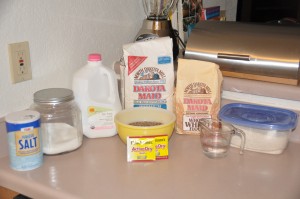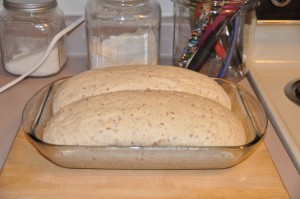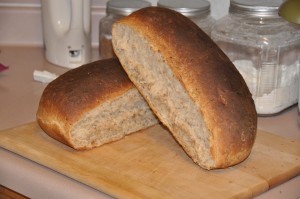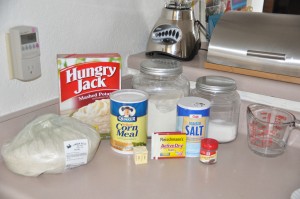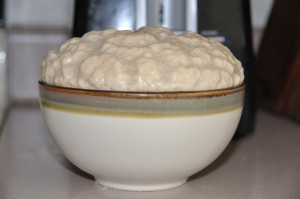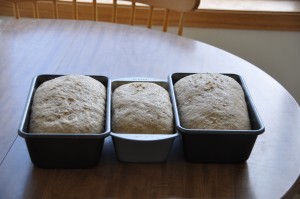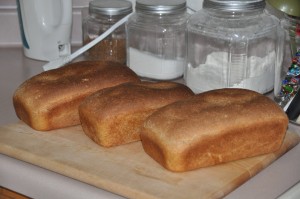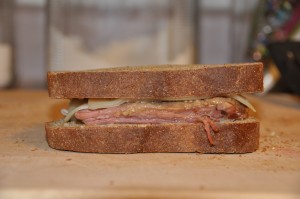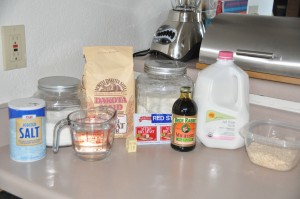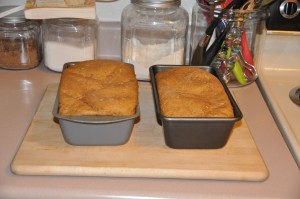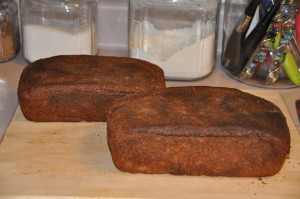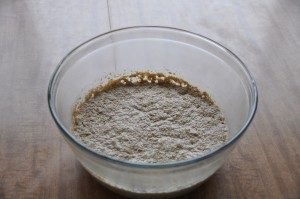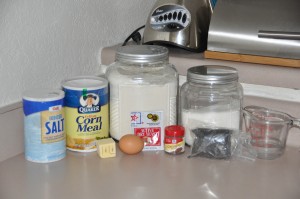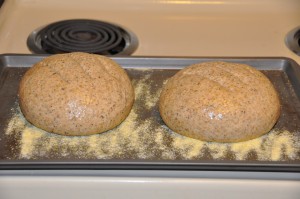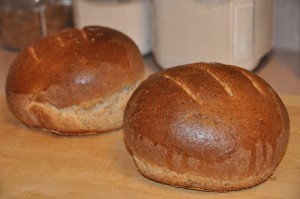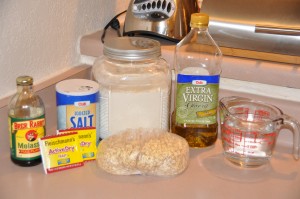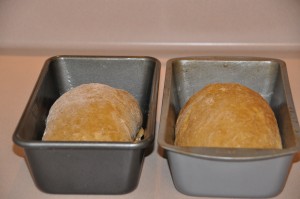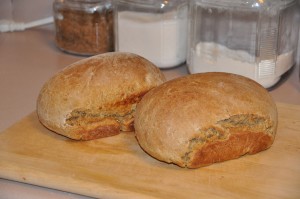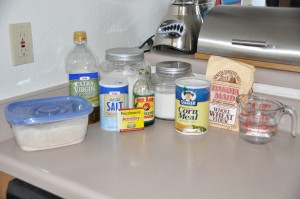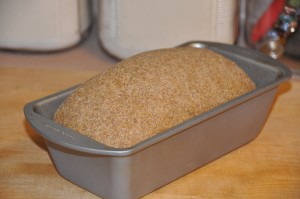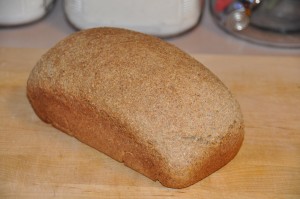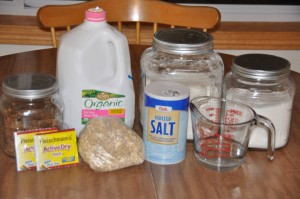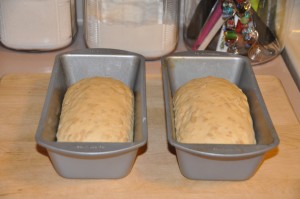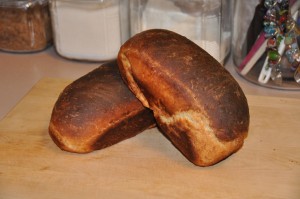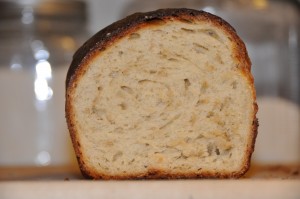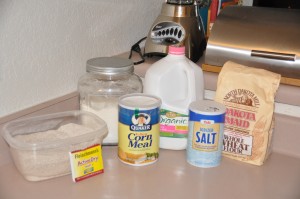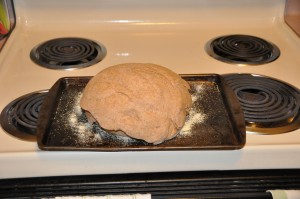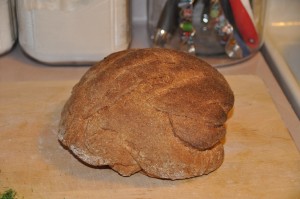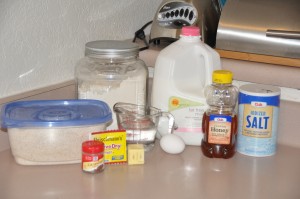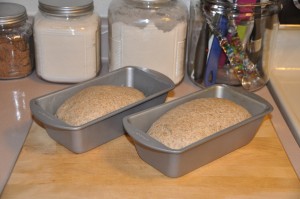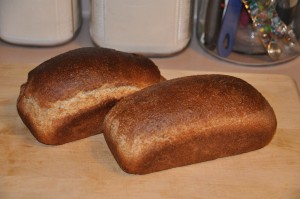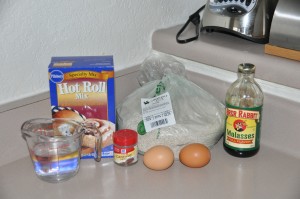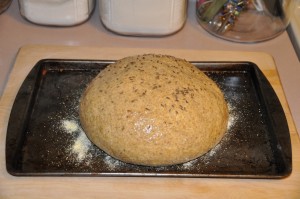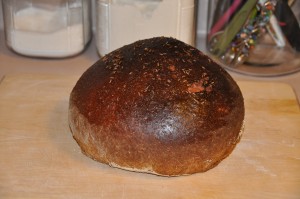“I learned to bake this bread in Norway, at Mrs. Ovenstad’s farm near Oslo. She bakes it twice a week…”
-James Beard, Beard on Bread
I put this recipe off until the end night because I couldn’t find any whole-wheat kernels locally. I ended up substituting cracked wheat instead, which I soaked in boiling water for one hour per the recipe.
Ingredients:
I mixed the dry ingredients together, and then I very carefully added the proofed yeast mixture, drained cracked wheat, water, and milk. The dough was difficult to mix since my largest bowl was too small to comfortably accommodate nine cups of flour and various other ingredients, but I managed to make a decent dough. After a thorough kneading, I let it rise for an hour.
Next, I formed the dough into two loaves. Since I didn’t have the 10 x 5 pans called for by the recipe, I shaped two long loaves and placed them in my 9 x 13 glass baking dish. After about 45 minutes, they had doubled in size and were ready for baking.
After one hour at 400 degrees, I had two delicious loaves with an incredible looking crust.
Mrs. Elizabeth Ovenstad’s Bread tasted just as incredible as it looked. It has a light, even texture with a hearty flavor and an amazing crust. Even Mike, who isn’t a big fan of whole-grain breads, couldn’t get enough of this. Luckily, the loaves are huge.

